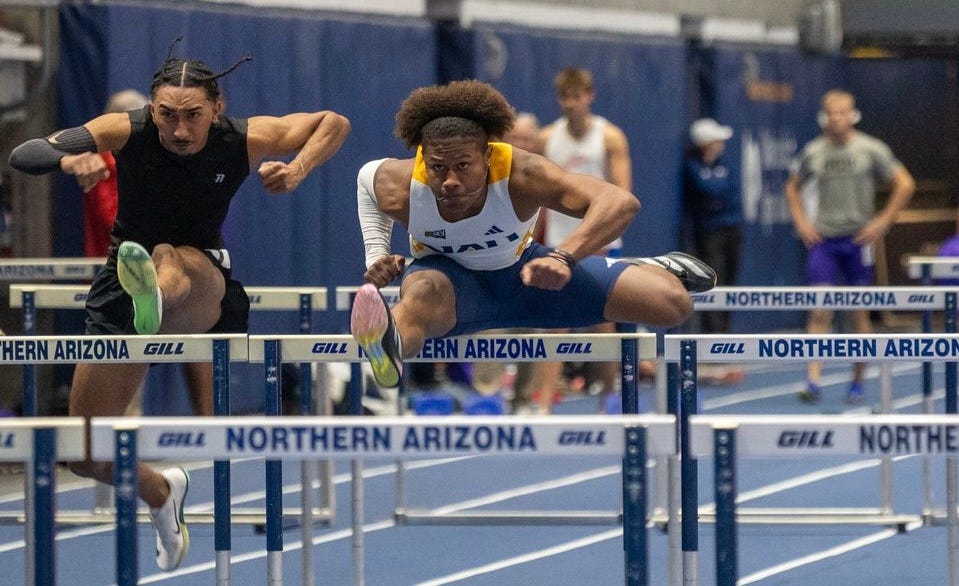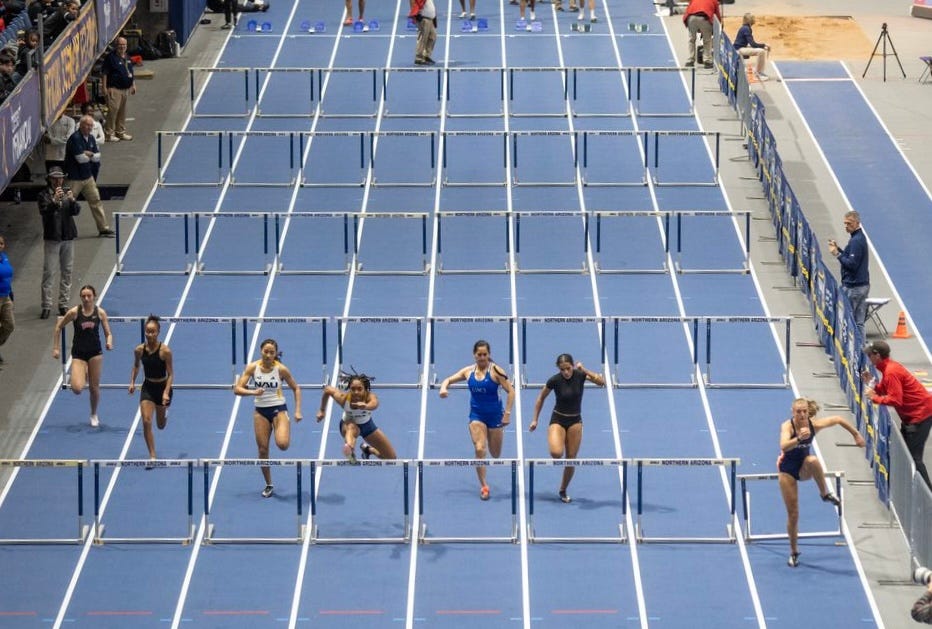To Move or Not Move In the Hurdles - Hurdle Tech 101
To Move or Not Move In the Hurdles — Answer: MOVE THEM IN!

If you don’t already move in the hurdles during practice, then follow along. Because the quick and short answer is “YES”, move them IN at EVERY PRACTICE! If you do move the hurdles in already, then still follow along and you may pick up something about the why.
No matter what level you’re coaching—youth to elite—hurdles need to be “discounted” or moved in. At every level, there’s a reason to move the hurdles closer/tighter together. Let’s go through what those reasons might be.
Lower-level and entry level athletes need hurdles moved in because typically they struggle 3 stepping anyway. Move the hurdles in to shrink the space and:
Work on good foot contacts (balls of the feet, not heel striking)
Refrain from over striding
Practice hurdle take off
Using hurdle tech over the top with more speed
Exiting the hurdle with technique and staying square
Intermediate level athletes need hurdles moved in to work on higher speed frequencies on ALL hurdle skills. As athletes progress, everything needs to move faster including:
Speed into hurdle one
Speed and frequency going into every hurdle
Increased speed of technical movements into the hurdle, over the hurdle, and out of the hurdle
Shorter, faster steps with higher frequency in-between hurdles
Elite level hurdlers need ALL the ABOVE and may need hurdles moved in even closer than lower-level athletes because…
Elite athletes must manage space better than others because they are moving so fast that every hurdle can feel too close and come too fast in a race, and that feeling needs to be matched in practice
In an actual race elite hurdlers will never get to full stride in between the hurdles so moving in hurdles during practice reiterates that they will need small, quick steps to be successful
But during a race they’ll fall?! Or they’ll feel too far away?!
Disagree. And I have hundreds of athletes that can back this up.
When we move in hurdles, athletes might notice at first. BUT the truth is, after a few hours of practice they won’t even notice the difference.
In practice, hurdlers don’t have competition adrenaline so moving in hurdles counterbalances that extra “push”.
In a race, my athletes make it to every hurdle. Period. And yours can too.
I have high schoolers that come to Elite Hurdle Camp and they are nervous, a little excited, and a little terrified by the spacing. But guess what—they do it! They surprise themselves by how fast, aggressive, and sharp they can be. And it carries over to their season.
Spacing Measurements
The first hurdle is always on the correct hurdle mark.
When I was a high school coach I moved in the rest of the hurdles by 2 feet every time.
Hurdle 2: moved in 2 feet (heel to toe)
Hurdle 3: moved in 4 feet (heel to toe)
Hurdle 4: moved in 6 feet (heel to toe)
etc…
As a college coach I got sick of using literal feet and measured hurdle board to hurdle board with a tape measure.
Typically, I measure 7.89 meters hurdle to hurdle board for the women in practice. The women’s race hurdle distance is 8.50m.
For men during practice, I measure 8.85m hurdle board to hurdle board. The race hurdle distance for men is 9.14m
In all honesty, I might adjust a little (in or out) depending on what I think my athletes need but it’s never drastic from these measurements. You have questions? Message me and I’ll try to get back to you.
There are hurdle charts through great educational organizations like ALTIS (Andreas Behm’s Hurdle Course is exceptional) or using resources like Justin Wickard’s “Coaching Calculator”. The coaching calculator creates spacing for you based on athlete’s PR’s and other factors. It’s a great resource, especially for beginning coaches.
Conclusion? Simple.
Move the hurdles IN! It’s essential for the success of your athletes. They need it to reach their full potential! And I believe the better they are, the more they need it. As a coach, we need our athletes locked in on technical movements and high rates of speed.




